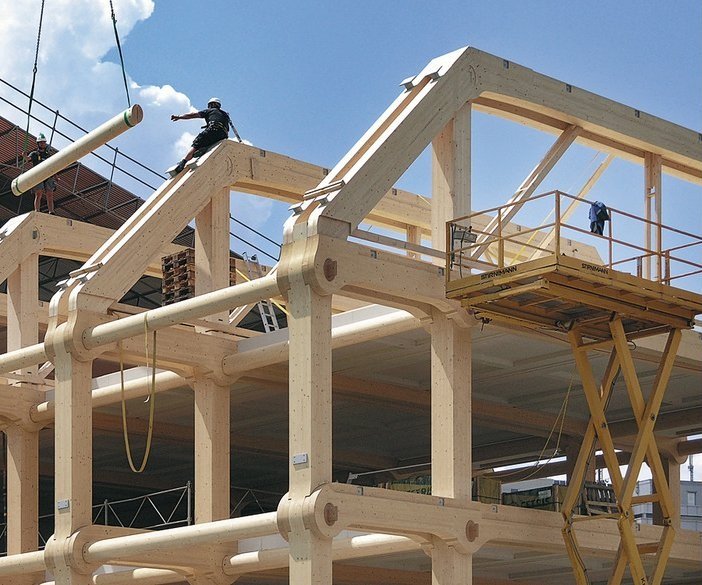The natural carbon bank: timber
Carbon bank: advanced timber construction in Japan.
1. Timber: A Nod to the Future from the Past
Timber construction, with roots stretching back to the dawn of civilisation, is ready to play its part in combating the urgent global issues of our time. Simple yet profound, timber could soon be the cornerstone in turning our concrete jungles into more sustainable landscapes.
2. Embodied vs Operational
To understand why, we need to distinguish between two often-conflated terms—embodied and operational carbon. Conventionally, architects and developers have focused on slashing operational carbon, the emissions associated with the daily use of a building, from heating and lighting to cooling. It's an approach that's intuitive. Operational carbon contributes 28% of global emissions.
However, the other side of this coin—embodied carbon—holds equal weight and is the harder problem. Embodied carbon accounts for emissions throughout a building material's life cycle—from mining, manufacturing, transportation, to its eventual disposal. Embodied carbon can amount to 50% of a building's total carbon footprint over 30 years, highlighting the importance of addressing both embodied and operational carbon for a truly net-zero structure.
The skew towards operational carbon is understandable—it's easier to measure, regulate, and reduce. Energy-saving appliances and renewable energy technologies, like solar, provide tangible means to cut carbon and reduce cost.
But the importance of addressing embodied carbon is next. The conversation is evolving, and timber is at its heart.
3. Carbon Vault
Timber offers clear practical benefits as a renewable resource, including the natural capacity to sequester carbon as it grows.
The process starts with photosynthesis, wherein trees convert sunlight, water, and carbon dioxide into glucose for growth, releasing oxygen back into the atmosphere. As trees mature, the captured carbon is secured within their structure. When timber is harvested and used in construction, this sequestered carbon remains locked, effectively storing it away from the atmosphere.
A study in the journal Nature quantified it — a timber-based residential housing unit can store up to 16 tons of CO2—equivalent to the emissions from an average passenger car driving almost 100,000 kilometres.
4. Demonstration Projects: Timber, Concrete and Steel
In comparison, steel and concrete—despite advancements towards lower-carbon variants—will not be able to match timber's natural carbon sequestration. The production of these materials are energy intensive and carbon intensive. Timber construction presents a more immediate solution.
However, the path towards timber-centric construction is not straightforward. In Australia, the design and execution of timber structures face considerable regulatory barriers and are not cost-competitive, once you move into the more stringent building code requirements of mid-rise apartment construction and above. In particular, further innovation is required to match the acoustic qualities of concrete cost-effectively.
In addition, we need demonstration projects to normalise timber for mid-rise construction, to share learnings within the builder and trade base, and to de-risk for project financiers.
Timber is normalised for low-rise townhouses and houses. Mid-rise office construction is underway. Mid-rise housing construction is next.
Not withstanding the challenges, timber signifies an opportunity to redefine our construction methods in Australia, creating buildings that blend sustainability, aesthetics, and inhabitant well-being. We’re excited for opportunities to partner and progress that future in mid-rise housing construction in Australia.

